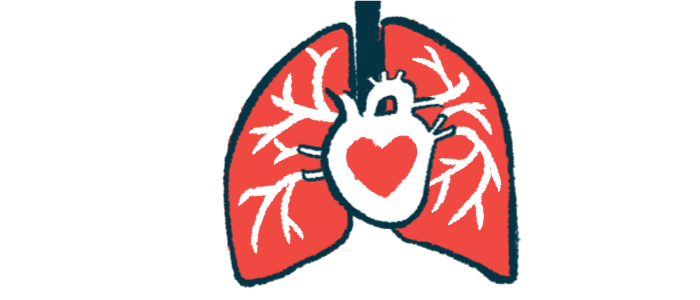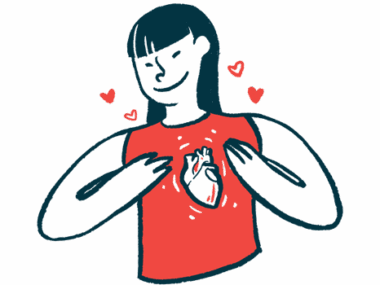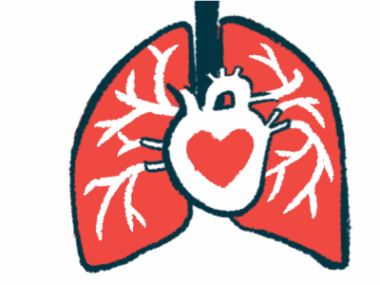Poorer outcomes seen with isolated, than systemic, cardiac sarcoidosis
Small study questions immunosuppression when heart only affected organ
Written by |

Among cardiac sarcoidosis (CS) patients treated with immunosuppressants, those with heart involvement alone can have poorer clinical outcomes than those whose sarcoidosis affects other organs along with the heart, according to a small study.
Despite showing less heart inflammation before starting treatment, people with isolated CS (iCS) experienced higher rates of major cardiac events than those with more widespread disease, known as systemic sarcoidosis with cardiac involvement.
Researchers believe the findings demonstrate that isolated cardiac sarcoidosis may be a distinct condition that requires its own optimized treatment regimen.
The study, “Different Impact of Immunosuppressive Therapy on Cardiac Outcomes in Systemic Versus Isolated Cardiac Sarcoidosis,” was published in the International Heart Journal.
Few studies have looked into immunosuppression with this disease
In sarcoidosis, granulomas, or small clumps of inflammatory cells, accumulate in the body’s tissues. They can affect just one part of the body or develop throughout a number of organs. The presence of granulomas in the heart, known as cardiac sarcoidosis, can lead to serious complications such as heart failure, abnormal heart rhythms, and sudden heart arrest.
Limited small studies have reported that isolated cardiac sarcoidosis may be associated with a worse prognosis than systemic cardiac sarcoidosis. However, whether immunosuppressive disease treatments, a standard of care, are equally efficacious in the two forms of cardiac sarcoidosis has not been established.
A team of scientists in Japan examined clinical data of patients treated with immunosuppressants at a single Japanese hospital: 21 with isolated CS and 36 with systemic CS.
Among those with systemic cardiac sarcoidosis, the most commonly affected organs outside the heart were the lungs (92%), followed by the eyes (56%), and skin (17%). Patients with isolated CS were significantly younger than those with systemic CS.
The rate of diabetes and cardiovascular diseases, such as high blood pressure and coronary artery disease, were similar between the groups. Coronary artery disease refers to the narrowing or blockage of the arteries that supply oxygen-rich blood to the heart.
A significantly lower proportion of isolated CS patients had signs of atrioventricular block, where disturbances in the heart’s electrical signals causes the heartbeat to slow (14% vs. 42%). In turn, they were significantly more likely than those with systemic CS to have ventricular tachyarrhythmia, where the heart’s lower chambers beat abnormally and too fast (24% vs. 3%).
At baseline, or before treatment initiation, PET scan data showed people with isolated CS generally had fewer signs of heart inflammation than those with systemic CS, suggesting “lower disease activity at baseline,” the researchers wrote.
Heart failure and fatal arrhythmias affected patients, despite treatment
Nearly all patients were treated with prednisolone, a steroid therapy, as a first-line immunosuppressive treatment, while two people with isolated CS first received methotrexate.
Some patients given prednisolone also received second-line treatment with other immunosuppressants, including methotrexate, azathioprine (sold as Imuran and others), tacrolimus, or mycophenolate mofetil (sold as CellCept).
Over a median follow-up of nearly four years, a significantly higher proportion of isolated CS patients experienced a major heart event, including cardiac death, hospitalization for heart failure, or a fatal ventricular arrhythmia, compared with systemic CS patients (52% vs. 17%). Ventricular arrhythmia refers to abnormal heartbeats originating in the heart’s lower chambers.
Overall, the survival rate without heart events was significantly lower in the iCS group compared with the systemic CS group (37% vs. 79%), “even under immunosuppressive therapy,” the researchers wrote.
Several statistical analyses considering different potential influencing factors consistently identified isolated CS as an independent predictor for major heart events. No specific treatment regimens were associated with a risk of heart events.
Poorer therapy response evident with isolated cardiac sarcoidosis
Some patients underwent PET imaging while on immunosuppressive therapy. Results showed that indicators of inflammation in the systemic CS group significantly decreased after initiating treatment, but were unaffected among isolated CS patients.
“These findings suggest that iCS had poor responsiveness to immunosuppressive therapy despite the lower baseline disease activity compared to that of sCS,” the researchers wrote.
Researchers hypothesized that this prognosis difference could be explained by a few different factors. The one they thought most likely is that iCS has different underlying disease mechanisms and is a distinct condition from systemic CS. This might mean that isolated CS patients require a different therapeutic approach.
“Conventional immunosuppressive therapy for [systemic] CS might be inadequate for patients with iCS,” the scientists wrote. “Further investigations are required in order to establish optimal treatment for iCS.”
Given that the study included a small number of Japanese patients, larger studies with a more diverse patient group are needed to confirm the findings, the team noted.






